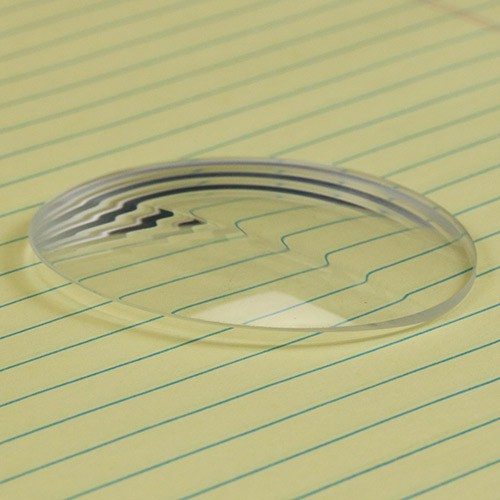Why Do We Need A Slab-Off?
In the realm of vision correction, addressing vision disparities between the two eyes, known as anisometropia, presents unique challenges. This condition, which can be congenital or caused by factors like cataracts or trauma, often necessitates specialized lens fabrication techniques. One such technique is bicentric grinding, commonly referred to as slab-off.
What Are Anisometropia and Antimetropia?
Anisometropia occurs when there's a significant power difference between the eyes – sometimes as high as four diopters. A specific form of this condition, antimetropia, arises when one eye requires a plus power lens and the other a minus power lens. These conditions lead to complications in vision correction, particularly with eyeglasses.
The Prismatic Effect and its Complications:
When an individual with anisometropia looks through the visual axis of a lens, they experience no prismatic effect or image displacement. However, as the eye moves away from this axis, a prismatic effect occurs, leading to image displacement. This effect is unequal in anisometropic patients, often causing diplopia (double vision) and making image fusion difficult.
What Is Aniseikonia?
Aniseikonia refers to the difference in image size perceived through each eye, resulting from the varying magnification or minimization by the lenses. This condition is often corrected using iseikonic lenses. Due to these complications, anisometropic patients sometimes prefer contact lenses, which move with the eye and minimize prismatic effects.
What Is A Slab-Off?
To address the issue of diplopia in anisometropic patients, slab-off or bicentric grinding is employed. This technique involves grinding base-up prism on half of the most minus or least plus lens. The process creates an appearance as if a “slab” of the lens has been removed. However, not all anisometropic patients require slab-off; some adapt well to the power difference.
When is Slab-Off Most Needed?
Hyperopic (farsighted) patients often experience more symptoms like headaches and blurring and hence may require slab-off more than myopic (nearsighted) patients. Additionally, presbyopic patients – those who require reading glasses – are more likely to need slab-off. Unlike non-presbyopic patients who can tilt their heads to minimize prismatic effects, presbyopic individuals must look further down the lens to use the reading segment, increasing the need for slab-off.
How Do We Calculate A Slab-Off?
To correct this, we need to calculate the amount of prism needed to realign the images. This involves a simple formula: Prism = hcm x D, where hcm is the distance from the distance OC to the center of the bifocal segment, and D is the lens power. We then subtract the prismatic effect of the weaker lens from the stronger to determine the necessary correction.
Where Can A Slab-Off Be Used?
Slab-off can be surfaced on all lens types. It can be applied to both single vision lenses and multifocals, including trifocals and progressives. However, extra care is required with trifocals, where the visible line that bisects the lens horizontally must align between the reading and intermediate sections, not the top line as in bifocals.
Can A Slab-Off Be Surfaced Digitally?
Traditionally, slab-off was performed manually, but advancements have led to digital or freeform surfacing slab-off. This approach allows for more precise corrections, smoother transitions, and thinner lenses, improving both the function and aesthetics of the glasses.

